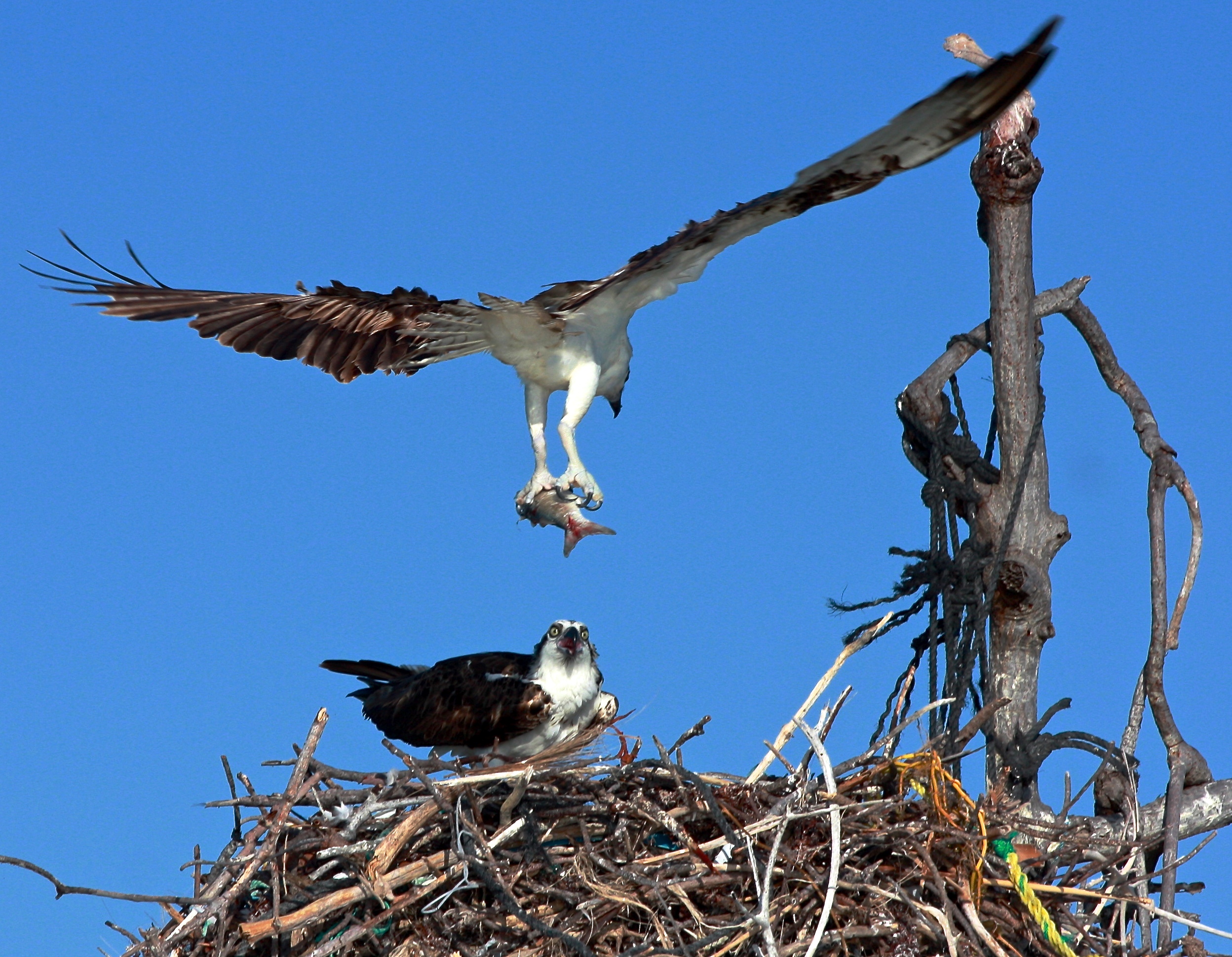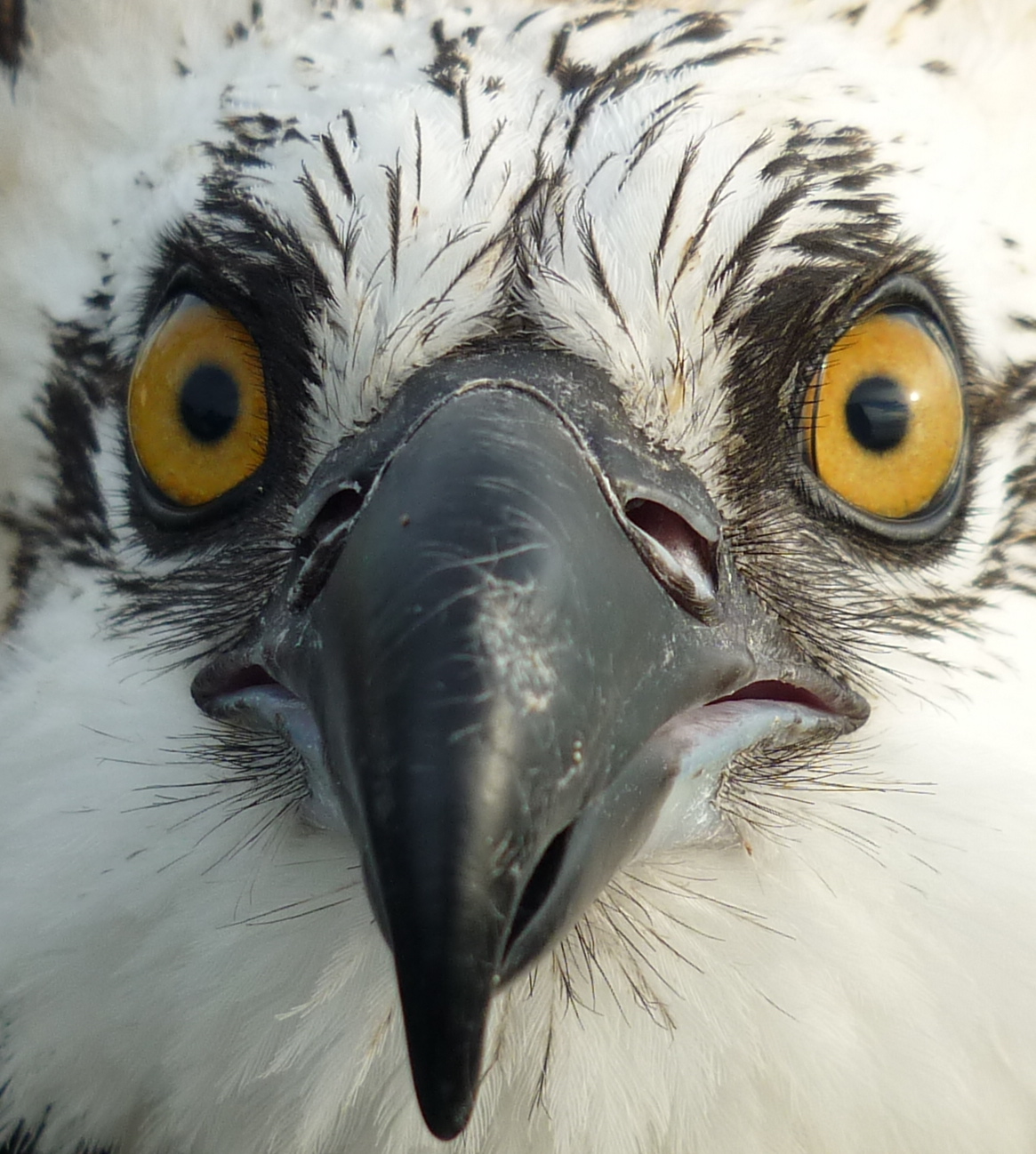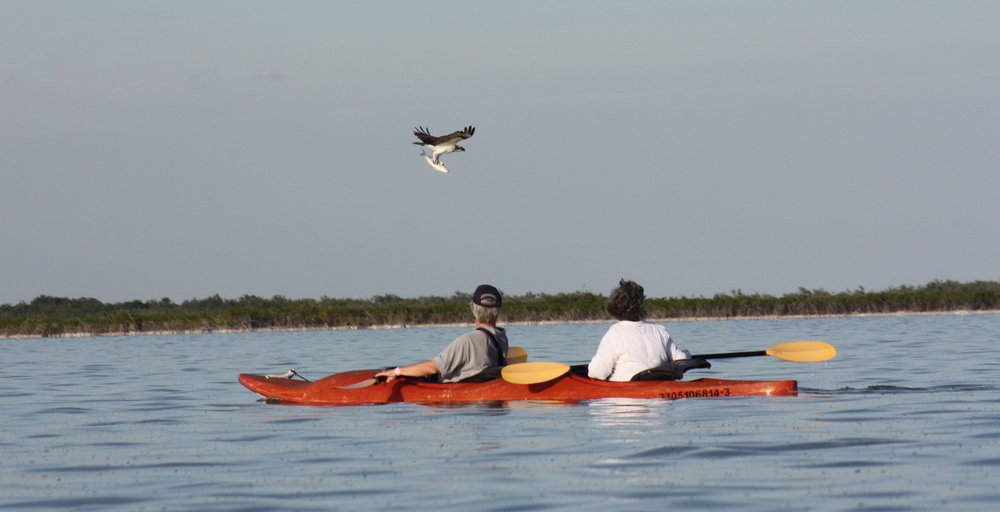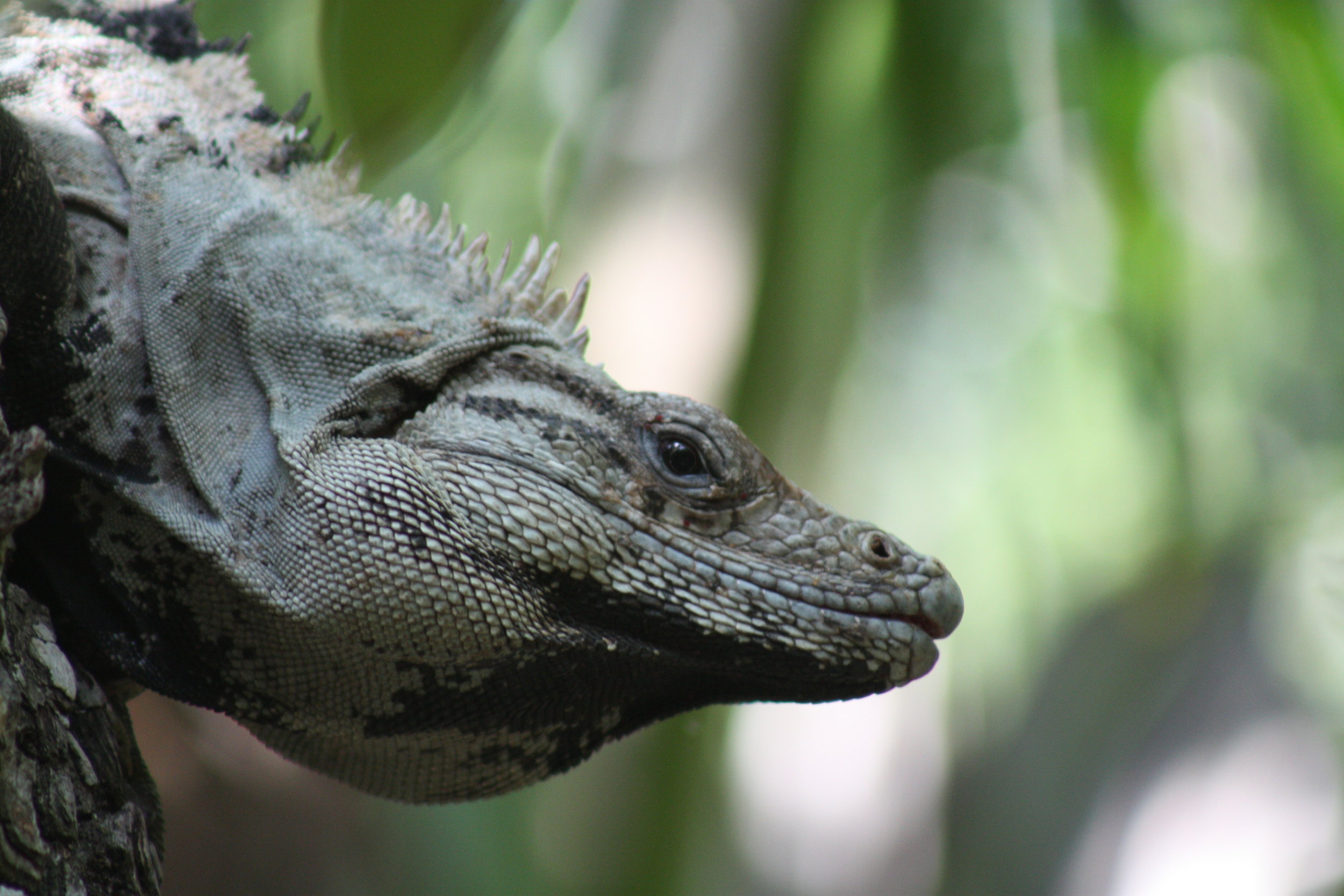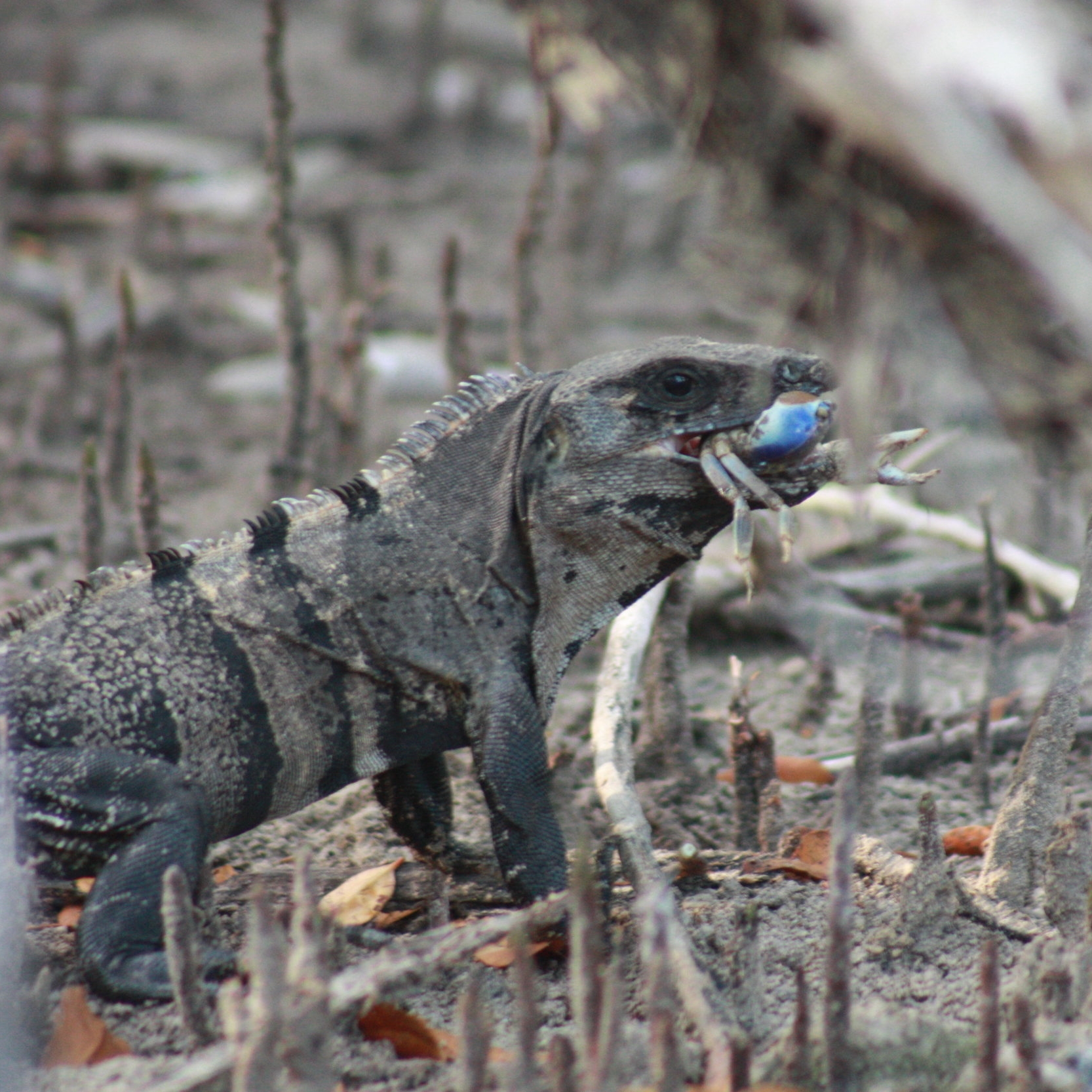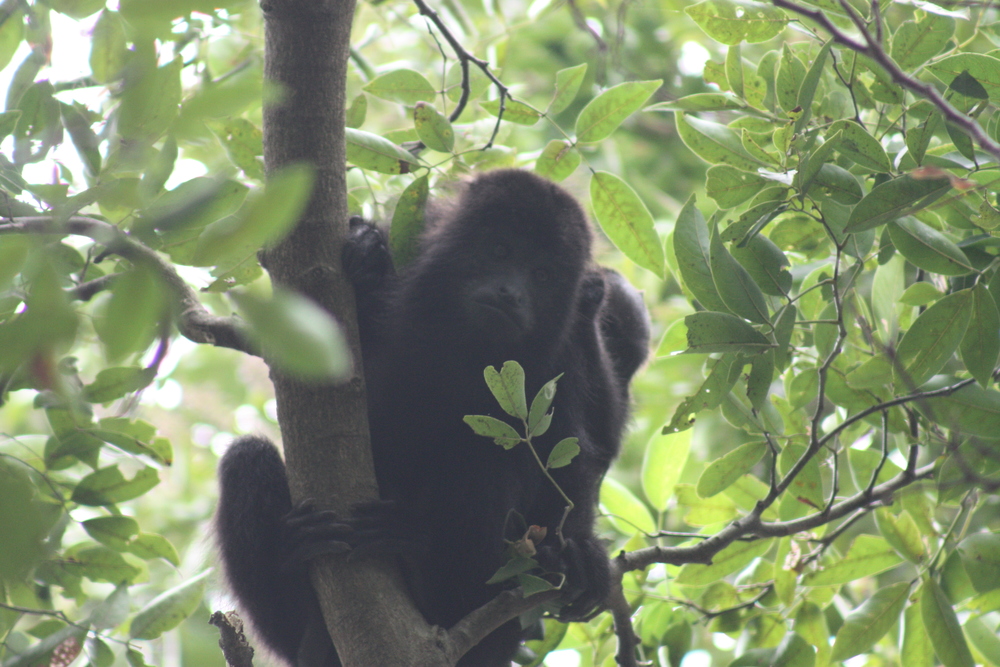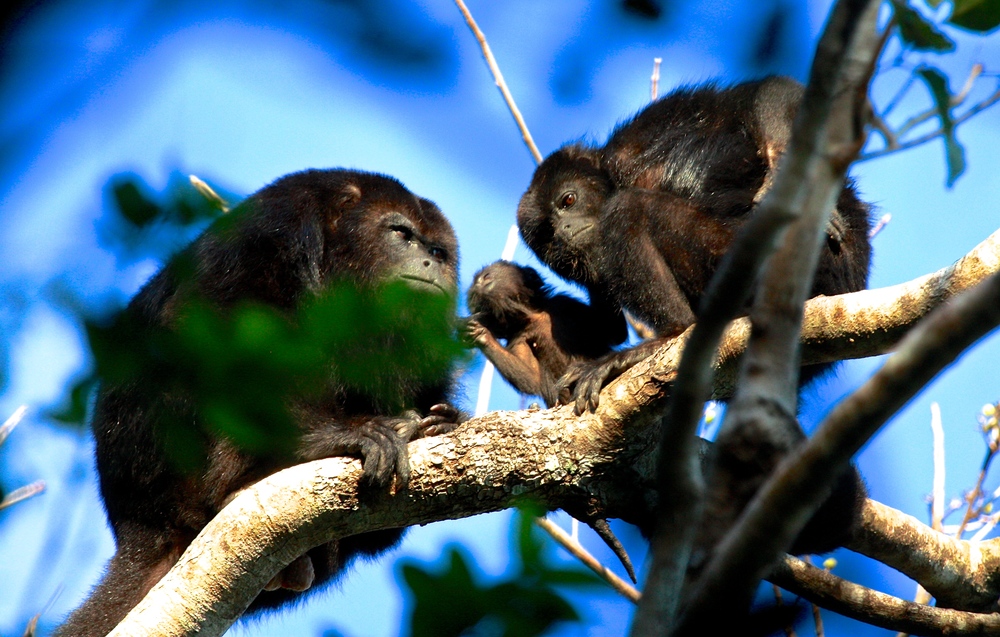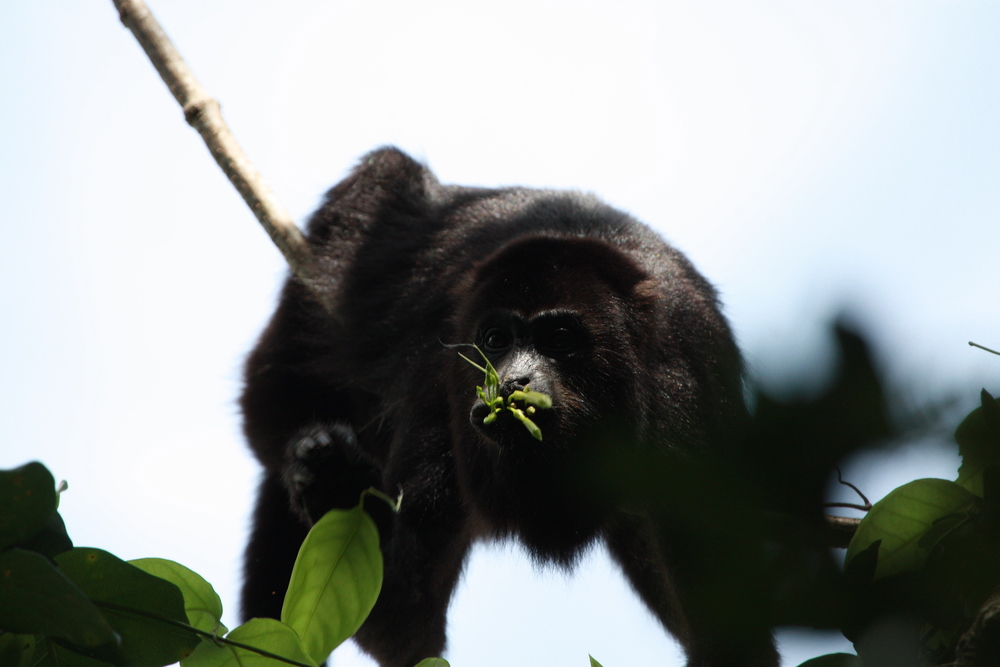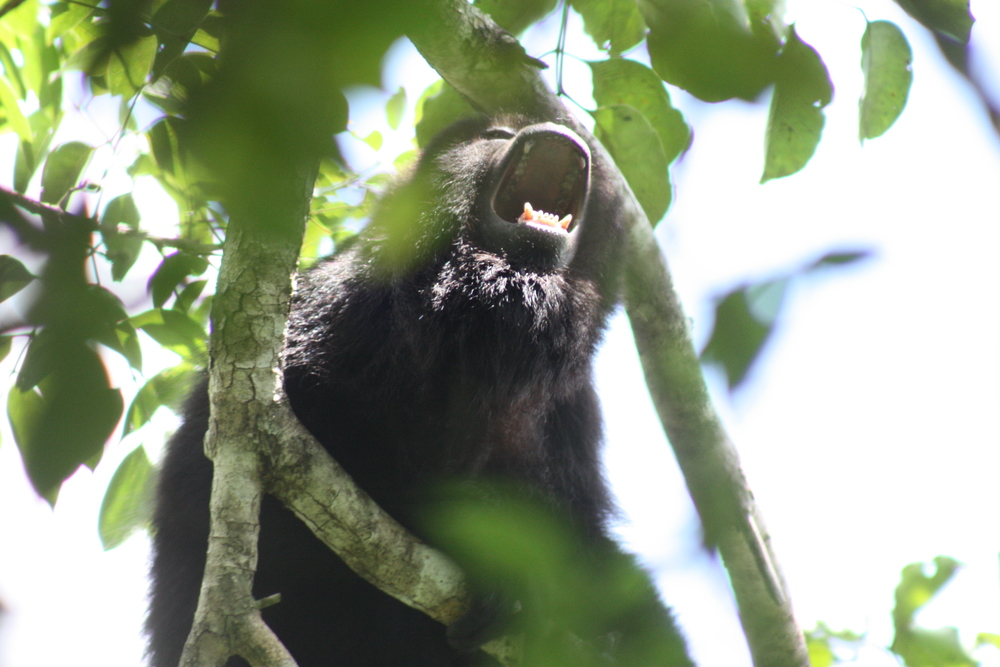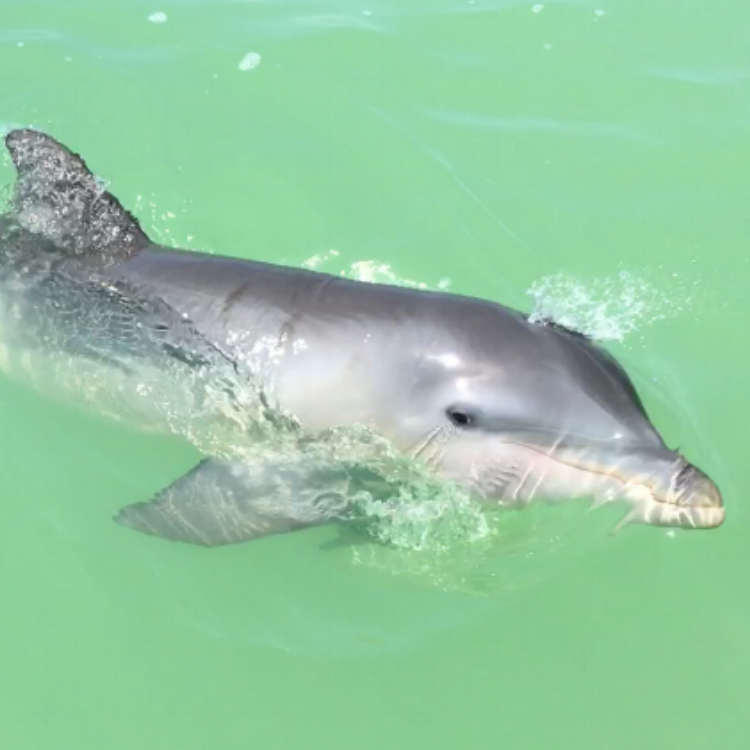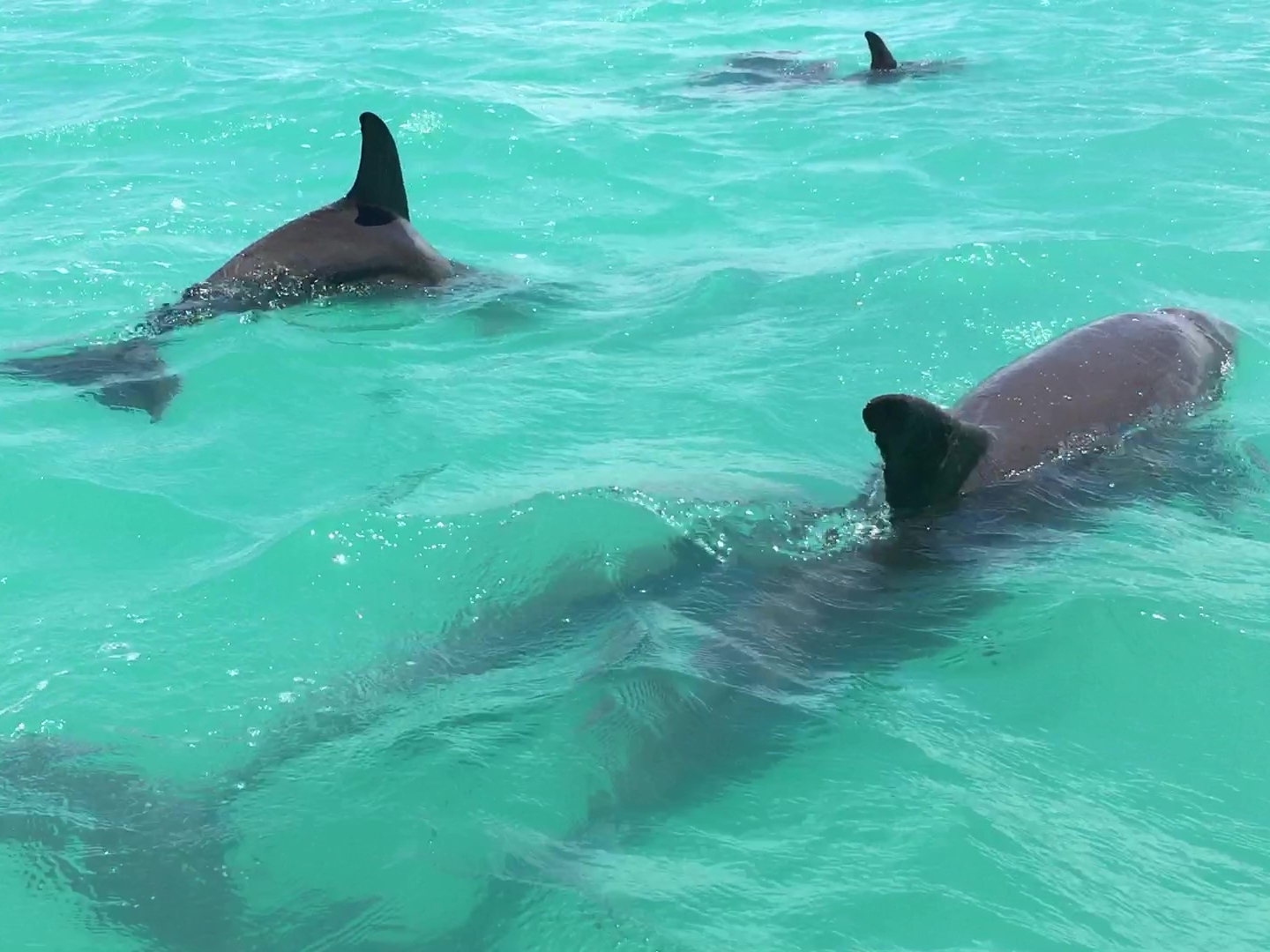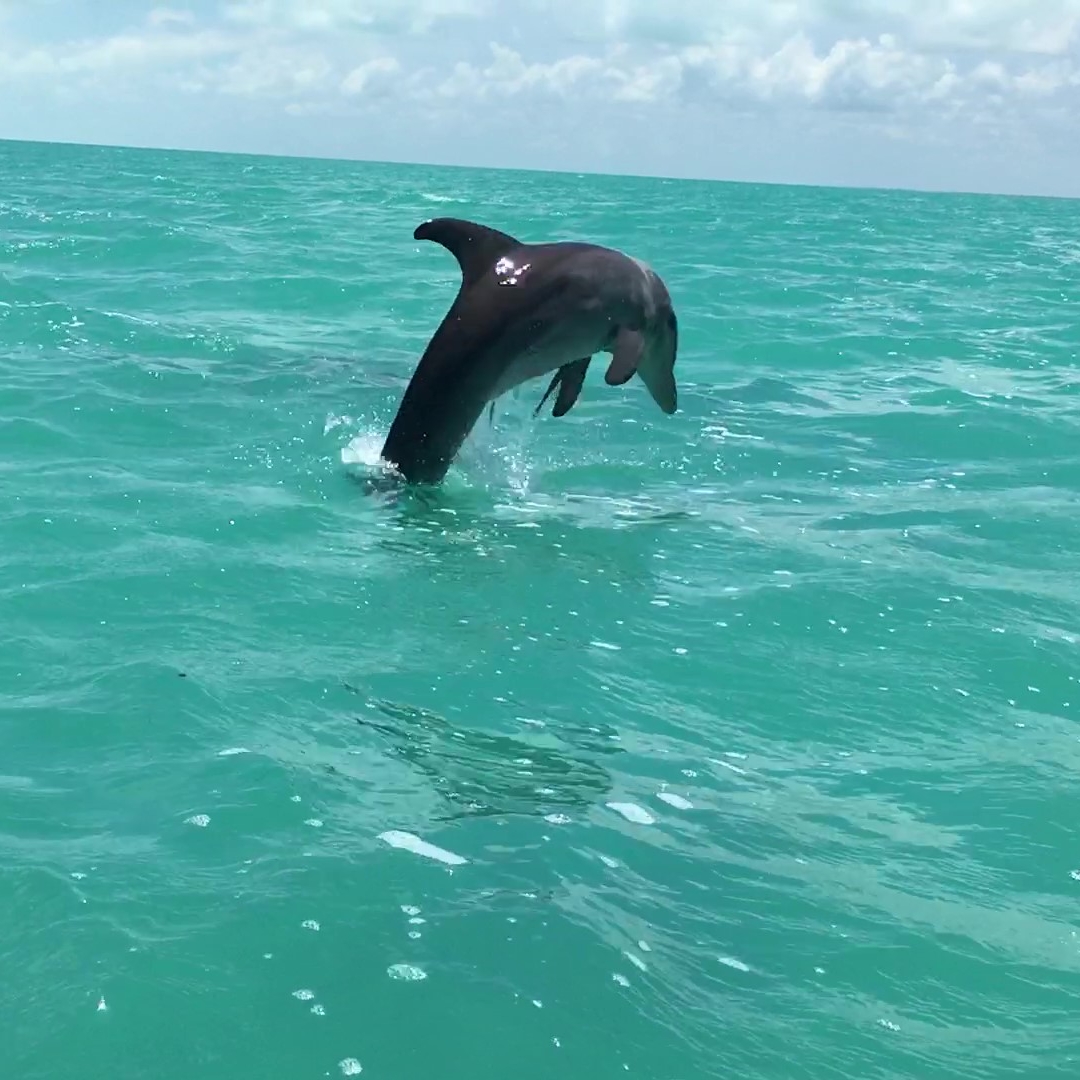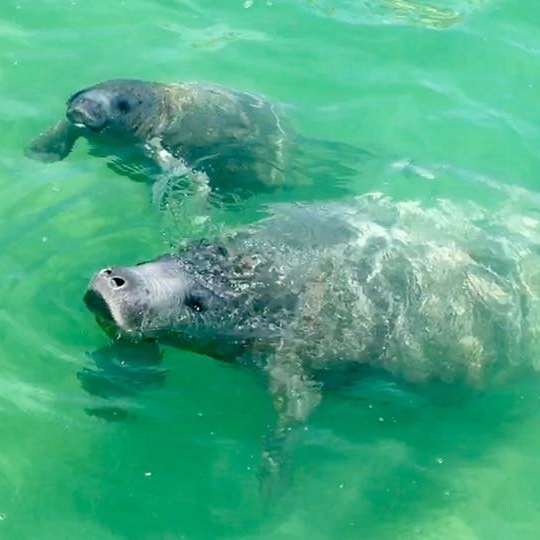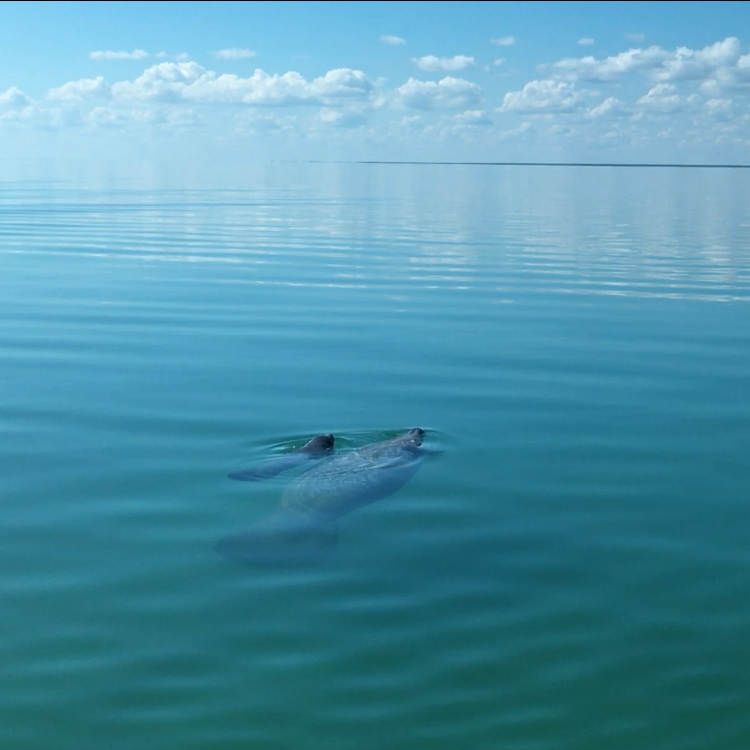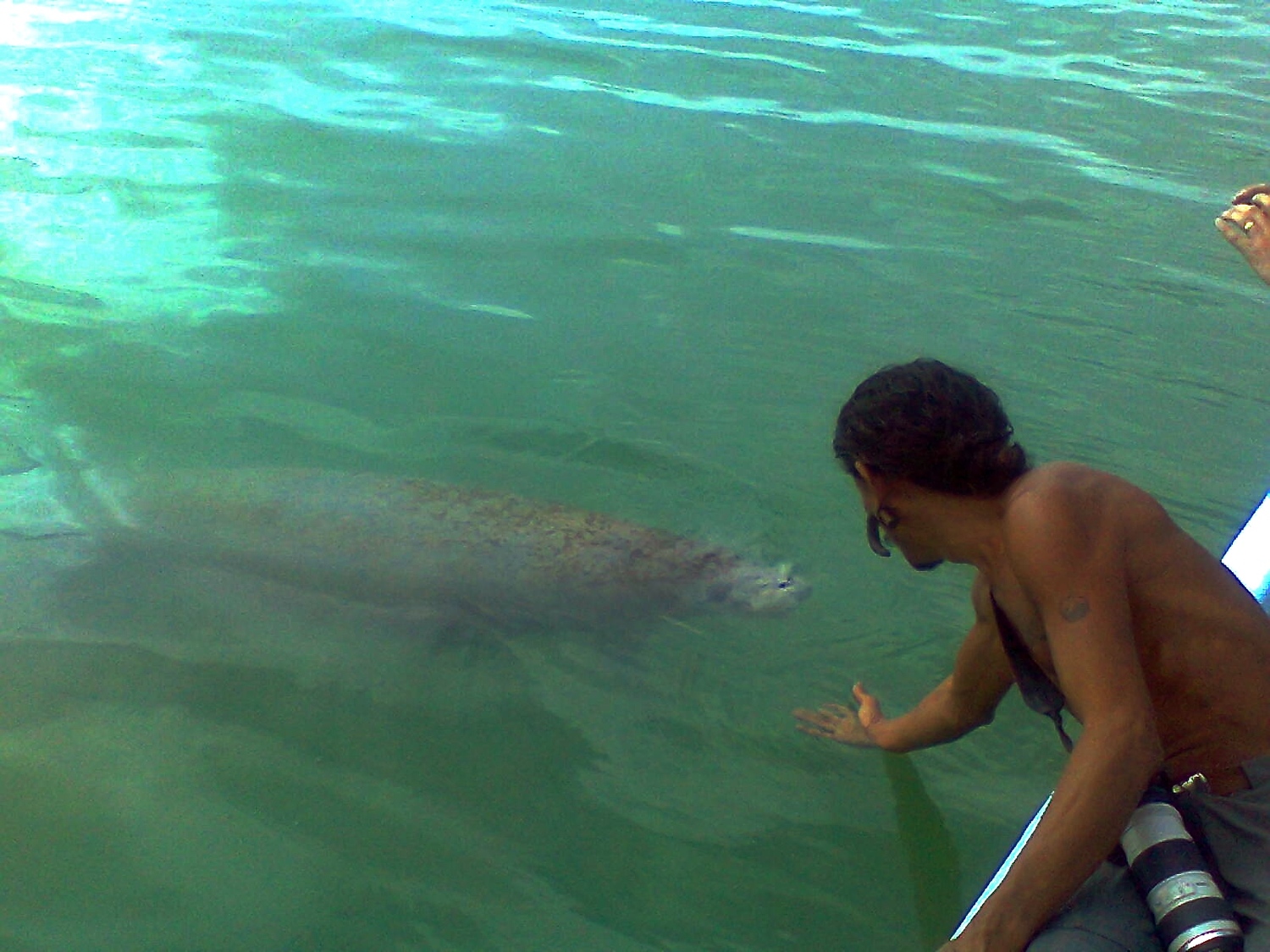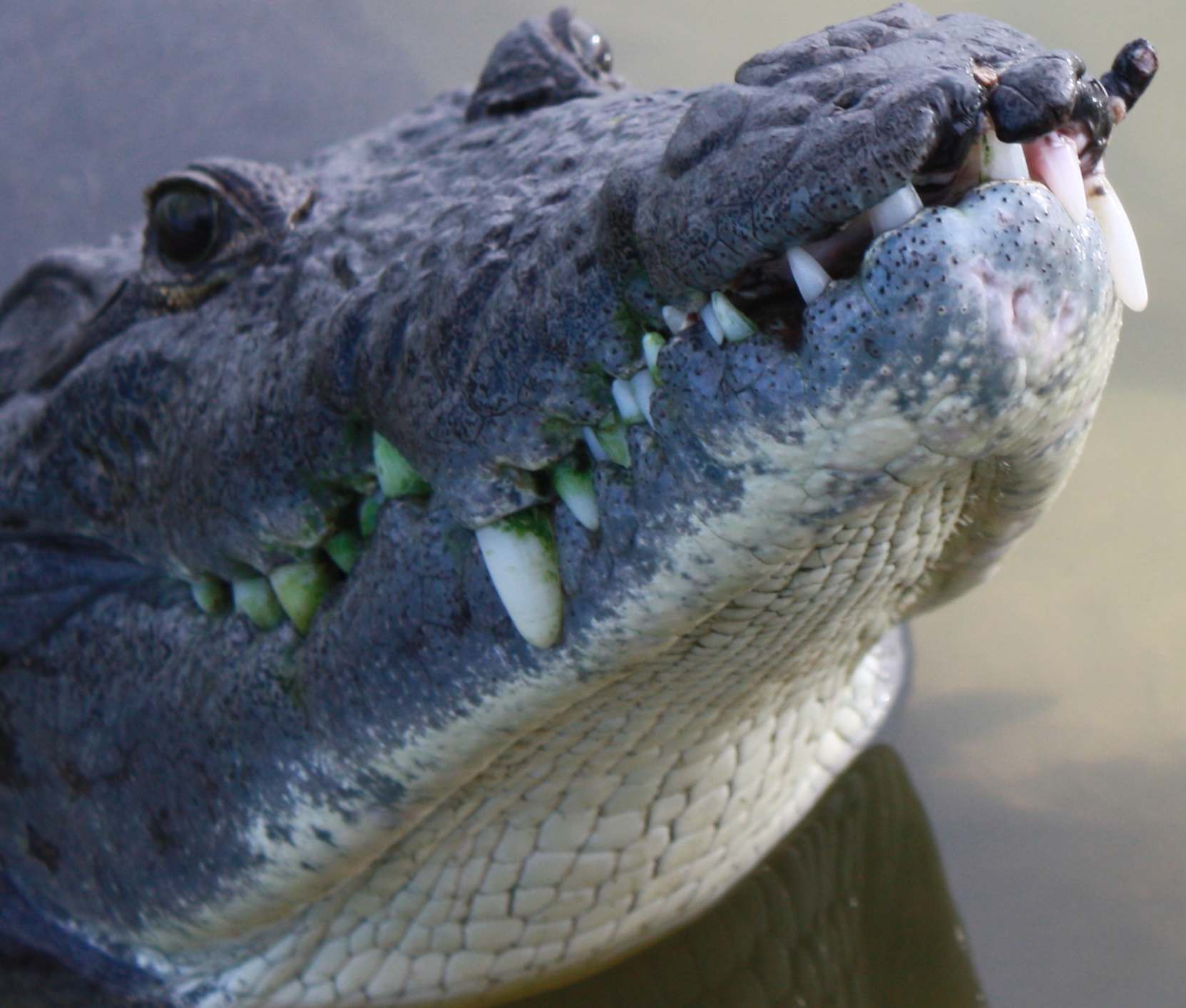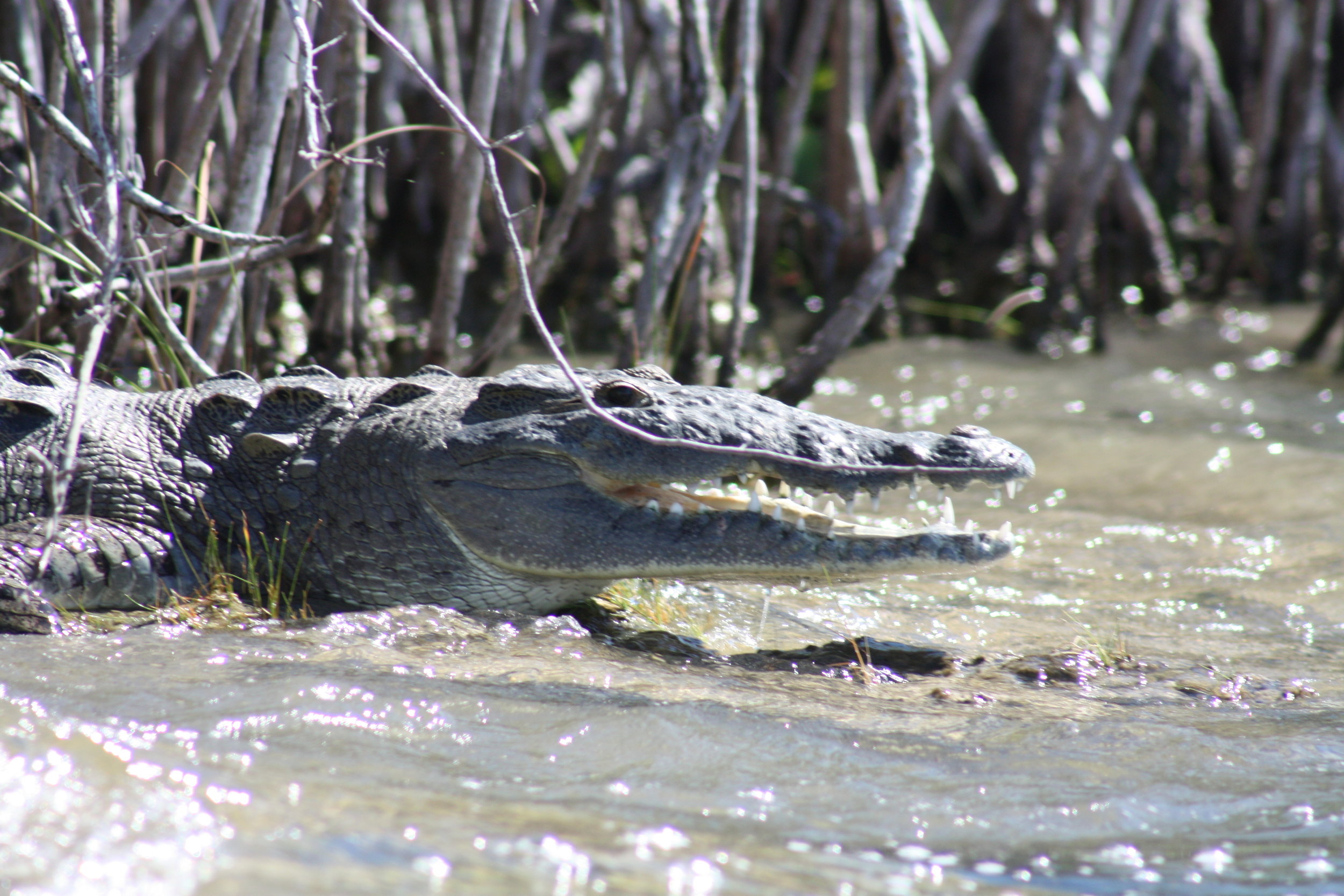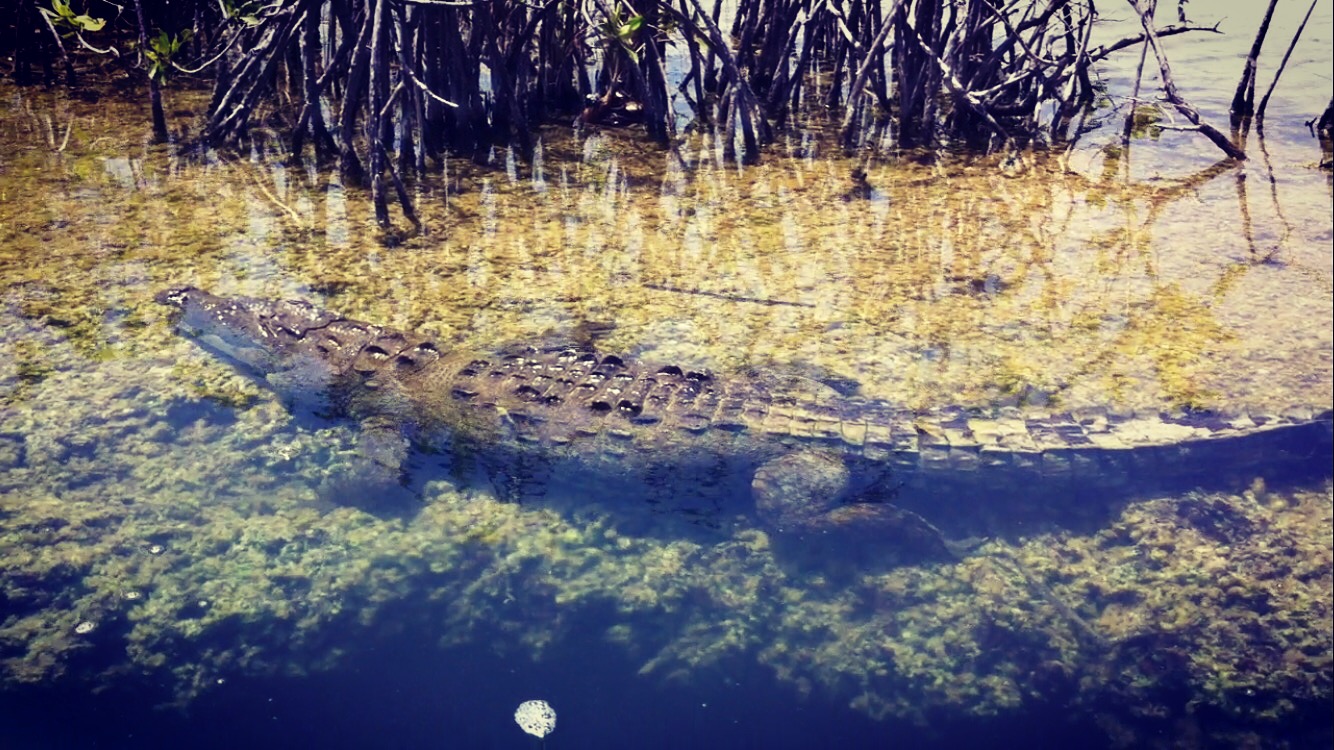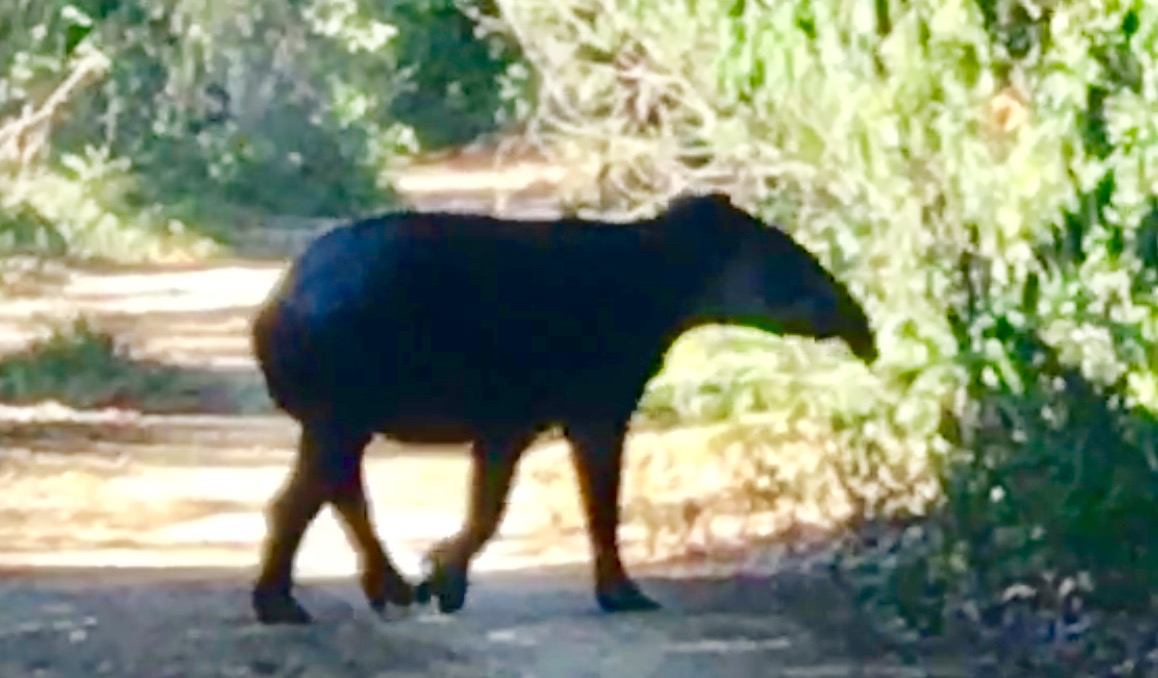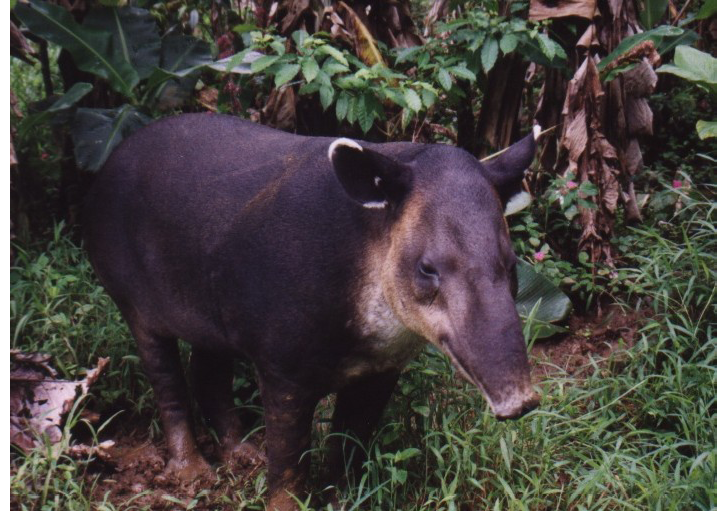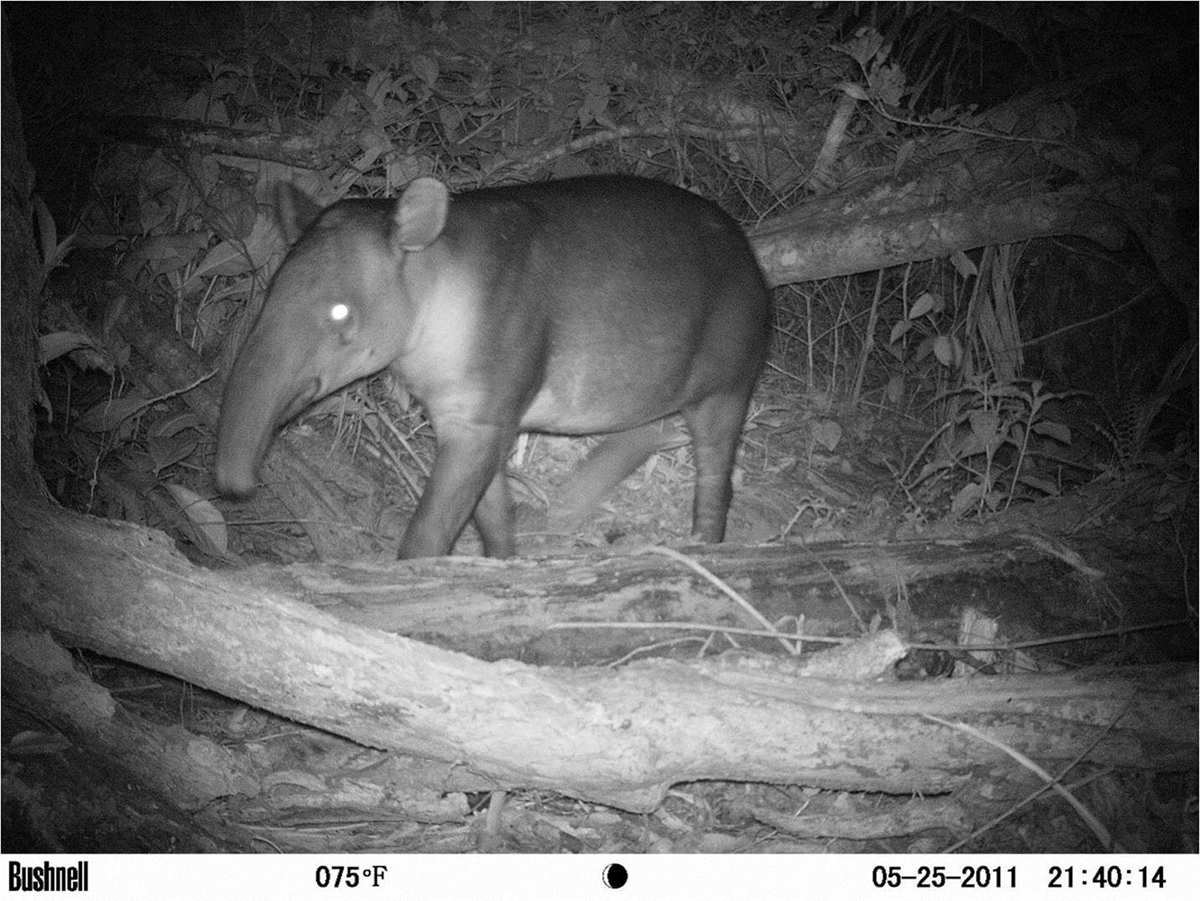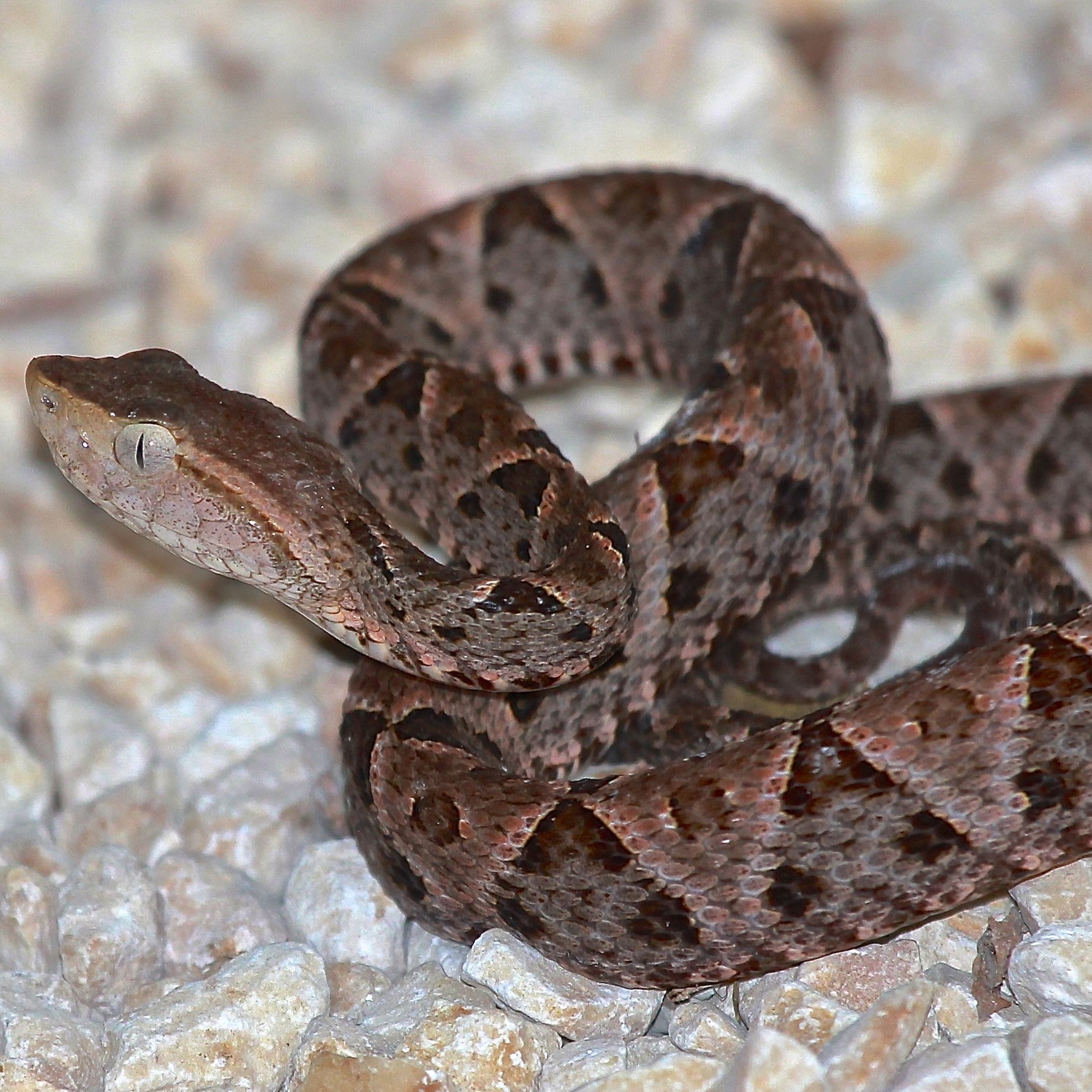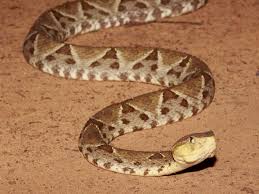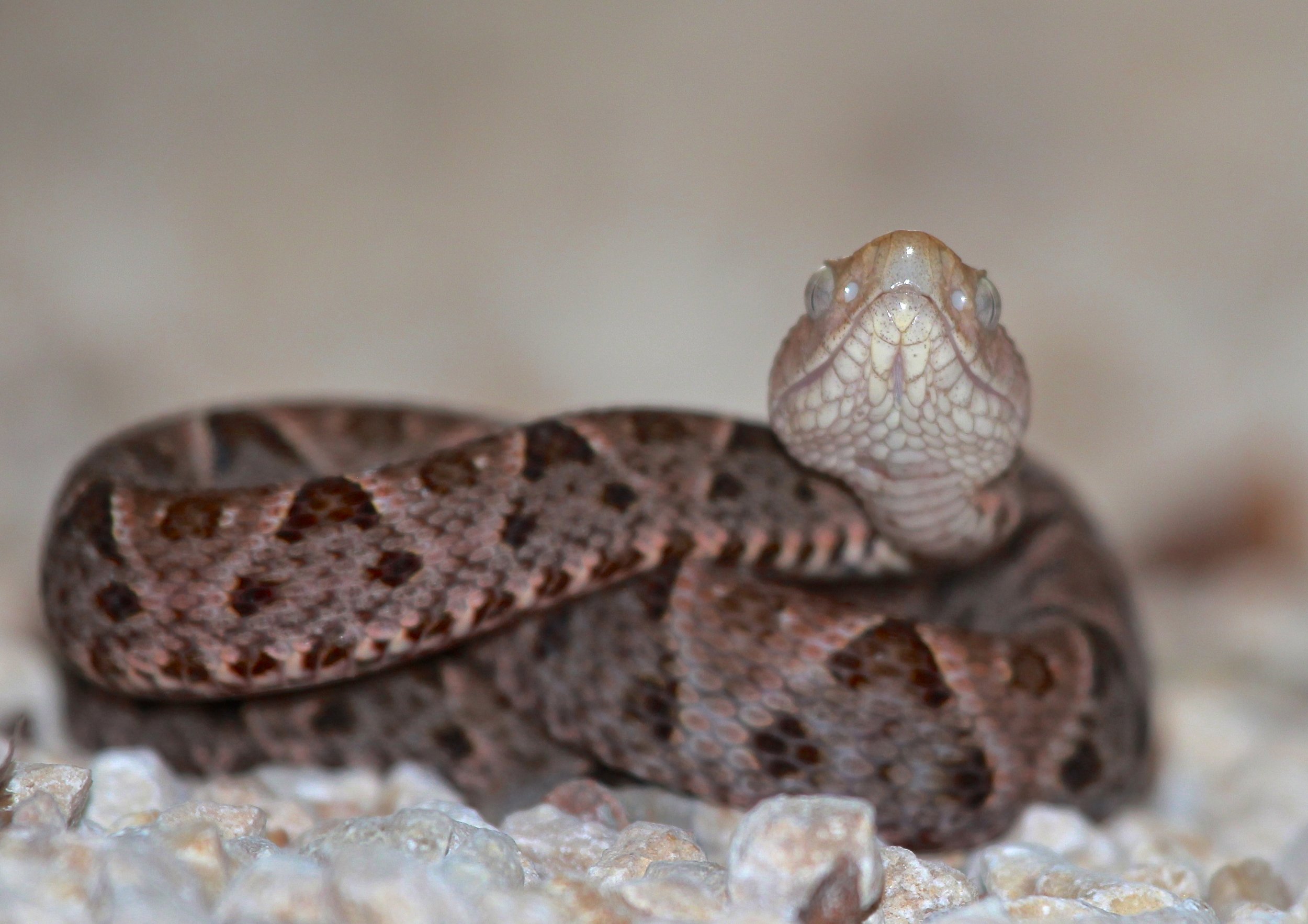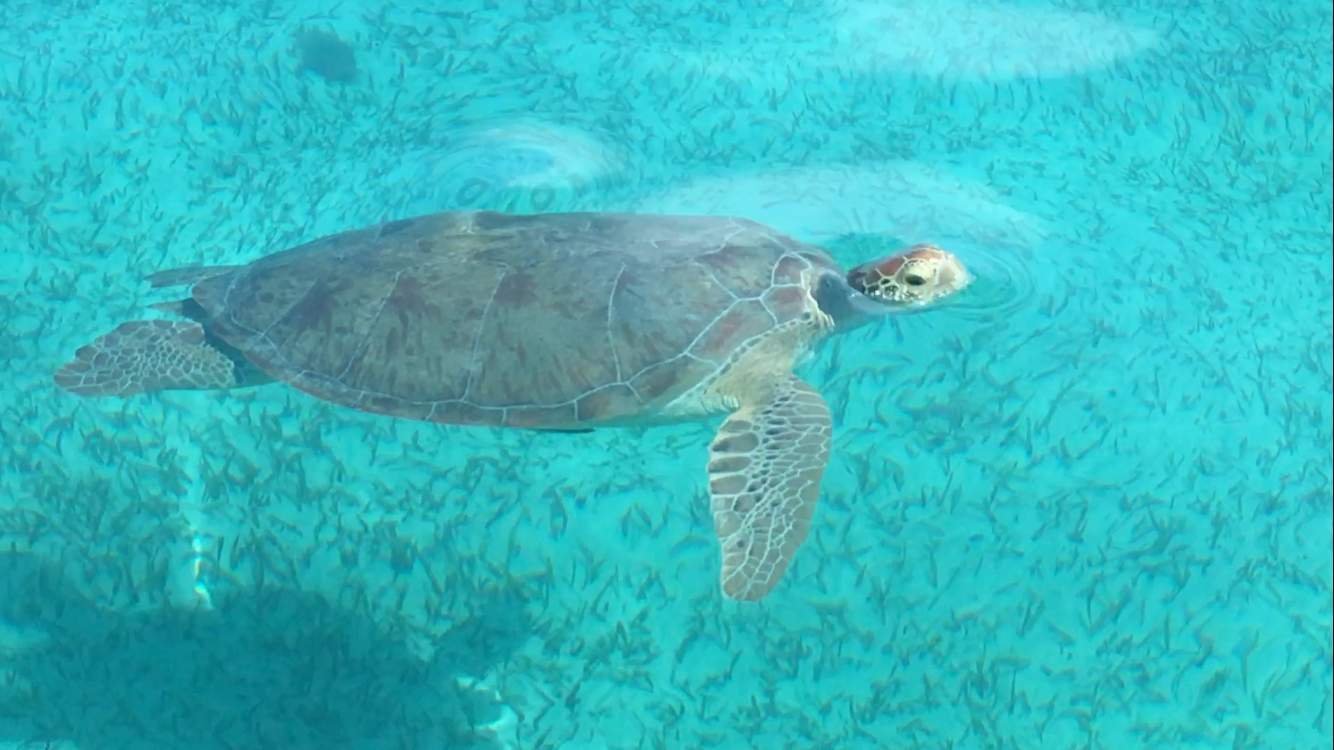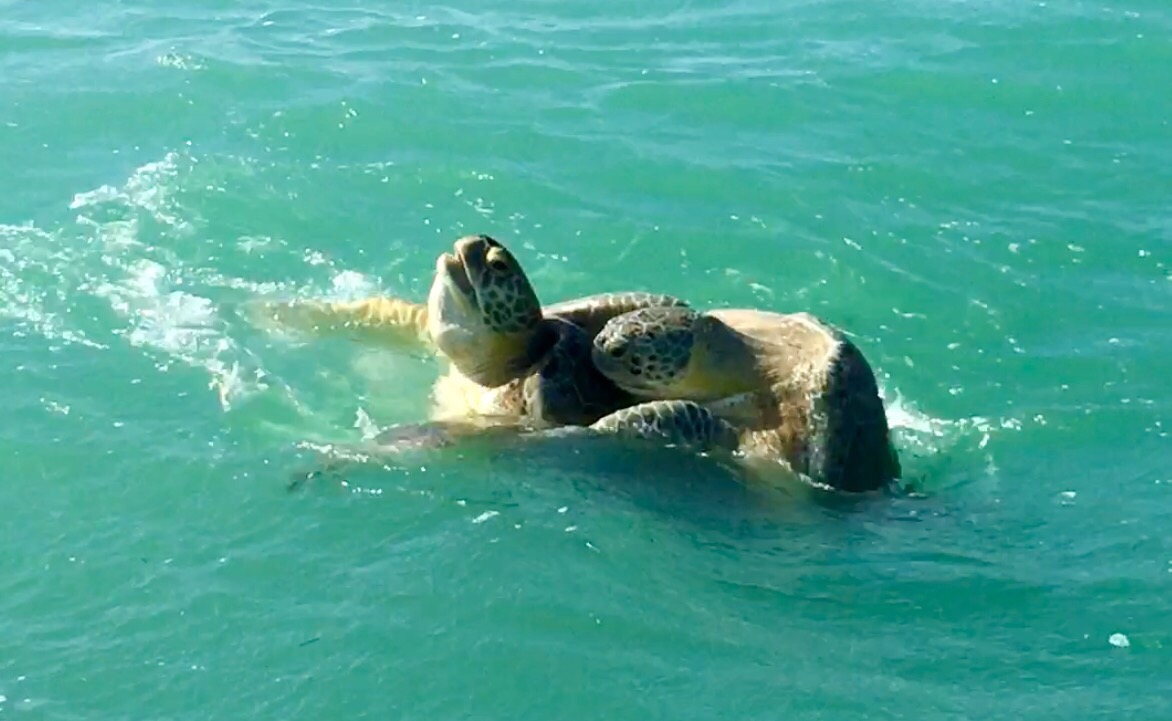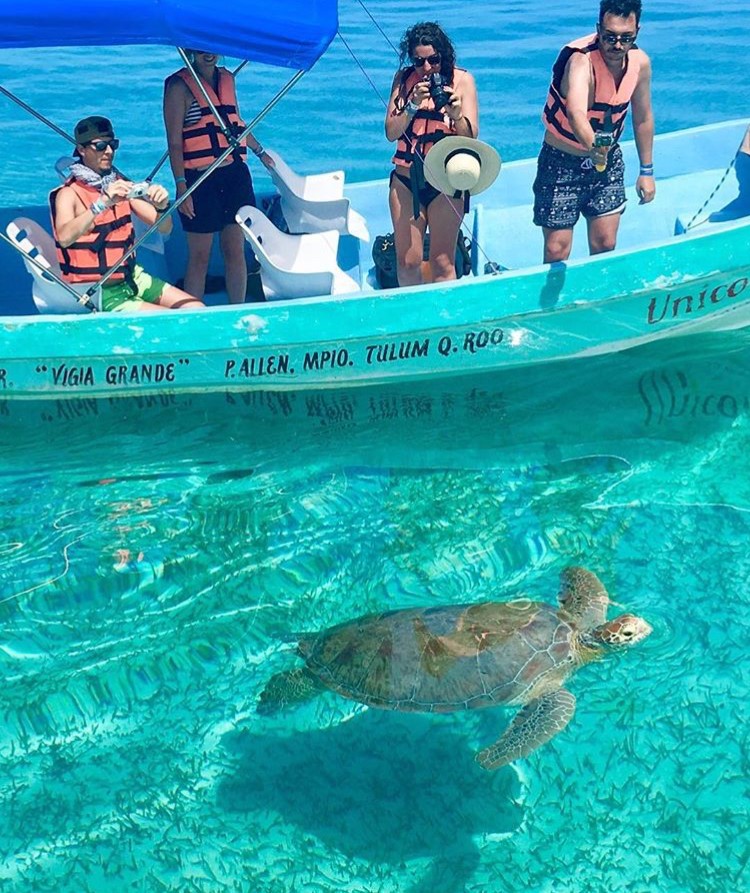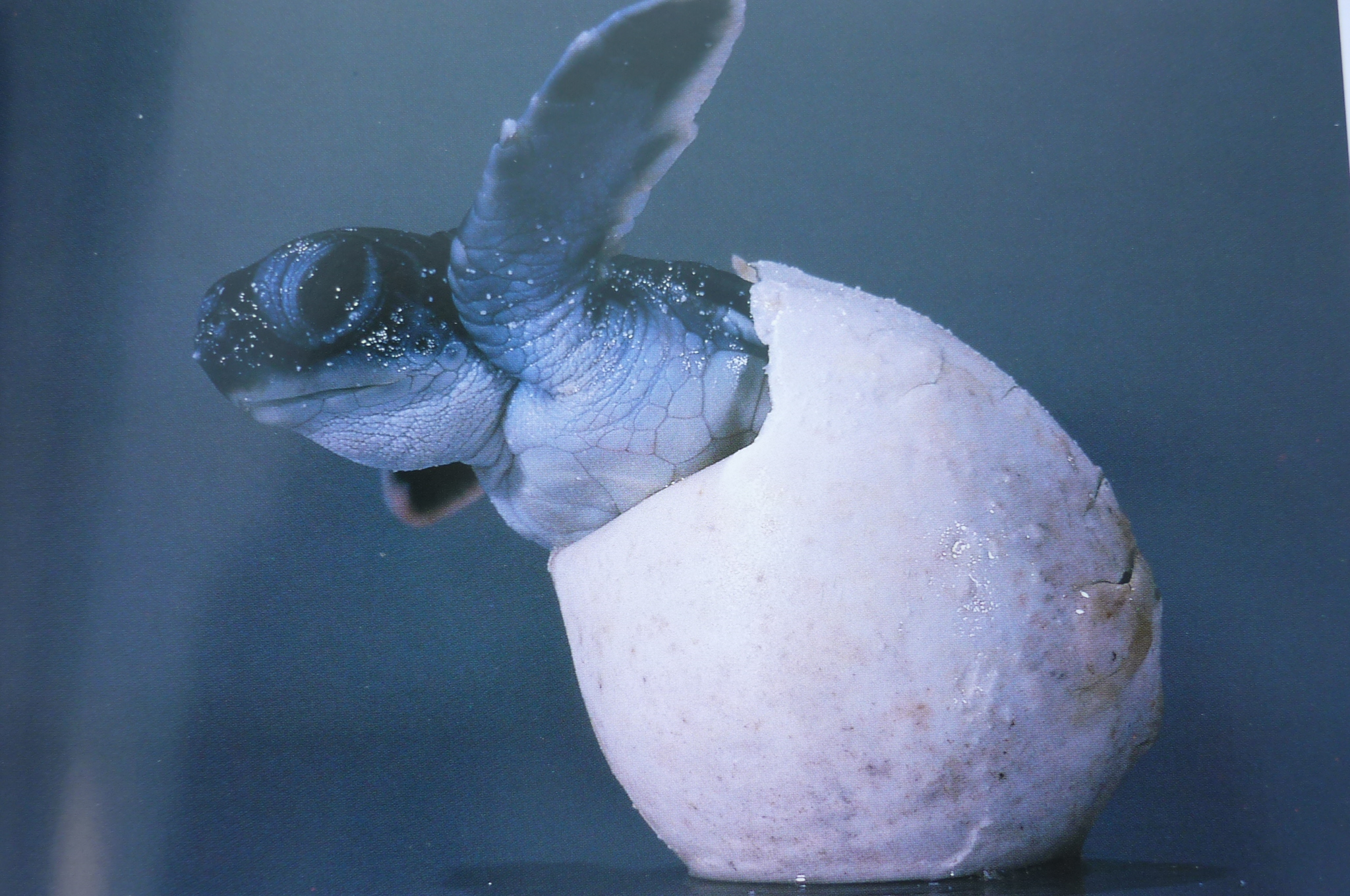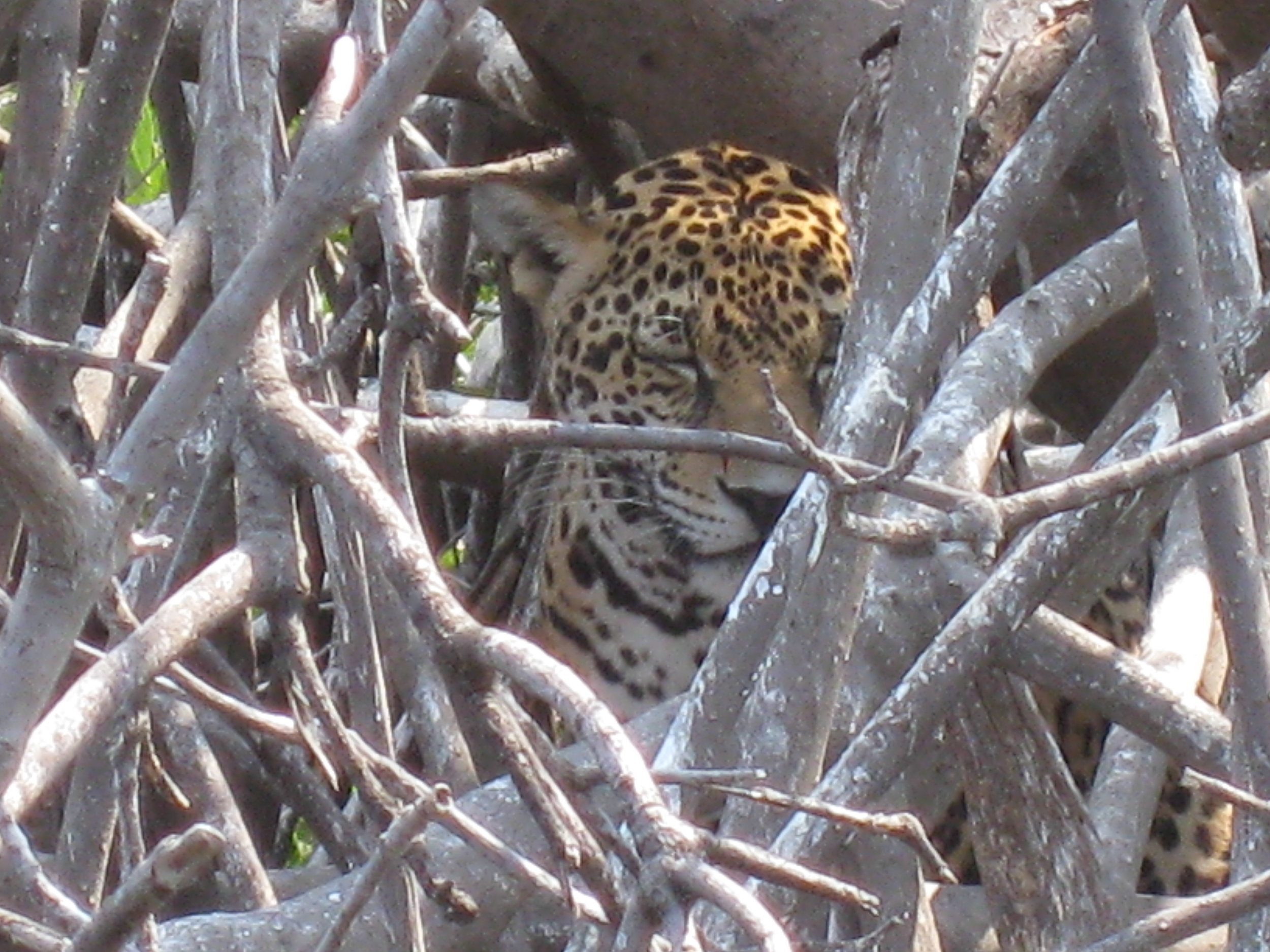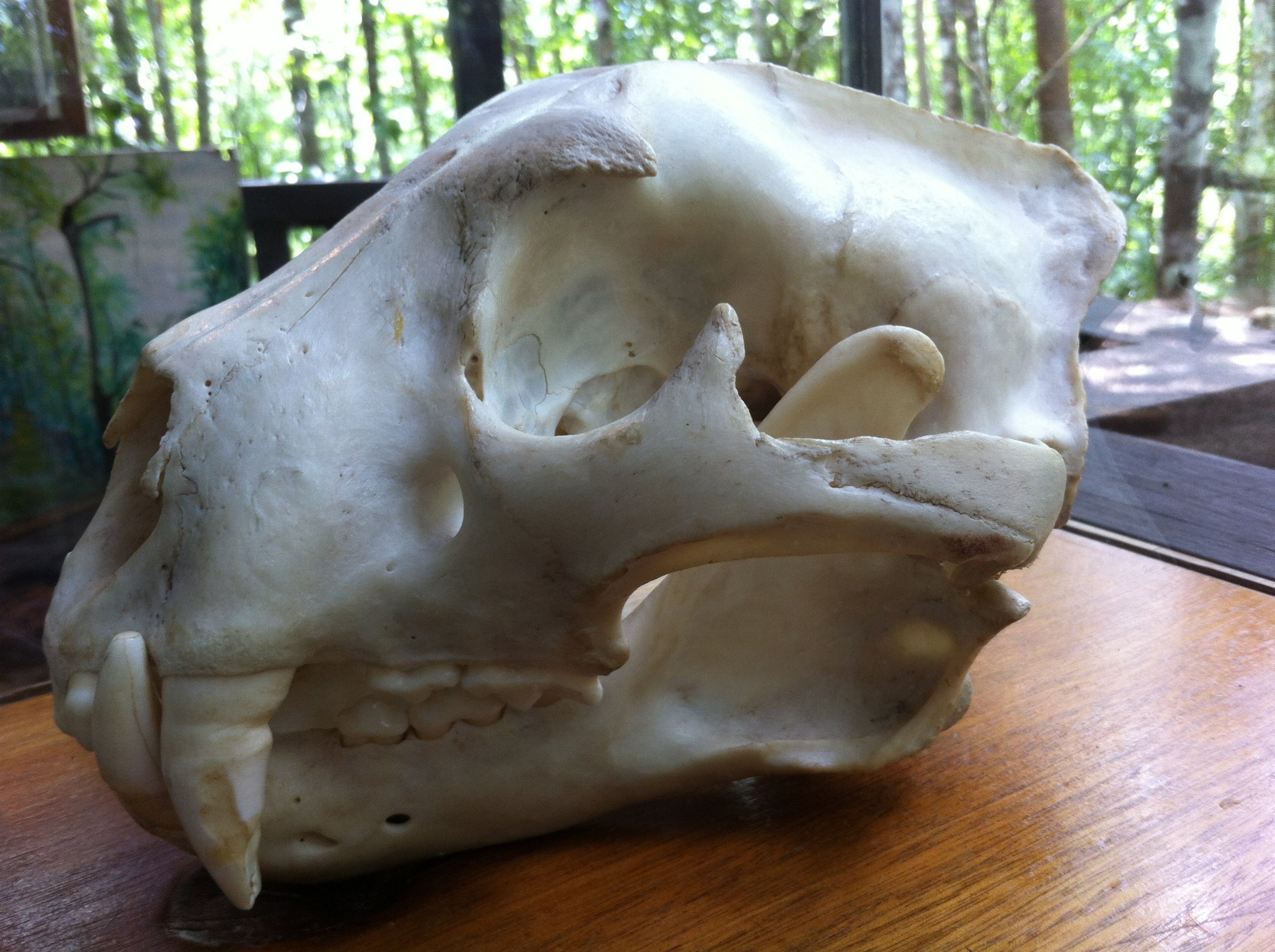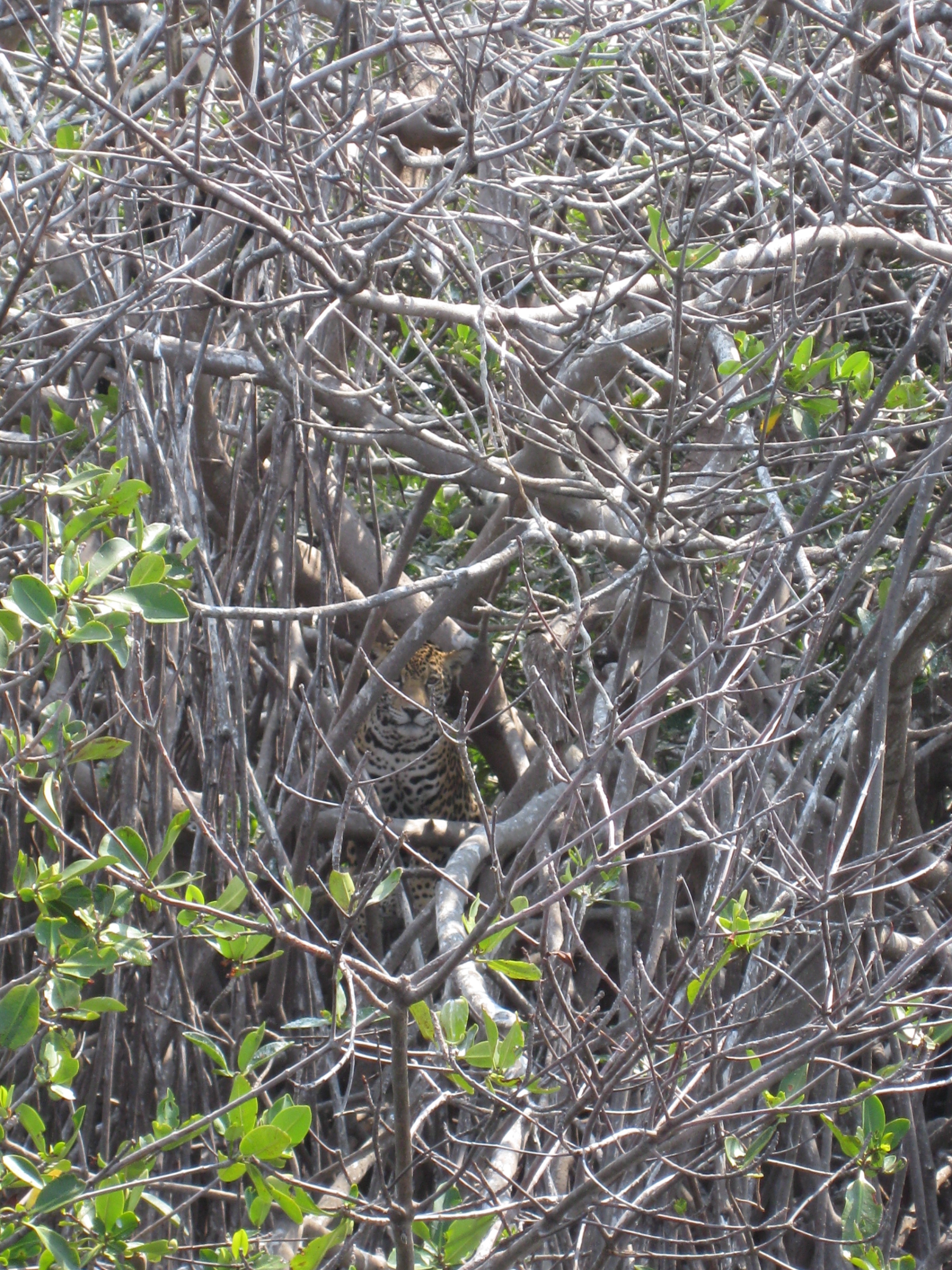10 fascinating wildlife species you may encounter in the Sian Ka'an Biosphere of México
common name English| scientific name| common name Español
1. OSPREY| Pandion haliaetus ridgwayi| AGUILA PESCADORA
This raptor is large by comparison to its cousins from the north and has very distinctive features. Their bodies are slender with long legs. Their wings are long and narrow, and when they fly their wings make an M-shape that can be seen from below. This is a good way to help us identify. Their average length is 22 inches tall and they weigh in at a whopping 50-70 ounces. Their feathers are reddish-brown on the back and white on the belly.
Ospreys are excellent anglers and spend their lives near bodies of water. They are unusual because of a reversible outer toe that allows them to grab the fish with two toes in front and two from behind. The spiked pads on the birds' feet also help to them grasp the slippery fish. This eagle is the definition of a pescatarian, eating almost exclusively live fish for their entire life.
Ospreys are magnanimous lovers and reproduce annually from January to April. The female lays 1-4 eggs. They build their nests on man-made structures such as telephone poles and reuse their nests every mating season. After a few years of rebuilding the nest, it can weigh literally a half of a ton‼
If there was a frequent flier club for birds, this species would be racking up it's points- logging more than 160,000 migration miles during its 15-to-20 year lifetime.
Ospreys are a conservation success story‼ Their numbers crashed from the 50's- 70's due to the pesticide DDT, poisoning the birds and thinning their eggs. They are still listed as endangered or threatened in the states where pesticides decimated the populations however once the DDT ban went into effect in 1972, the species decline was halted and they started to reproduce again. The latest estimation from Partners in Flight calculates a global breeding population of 500,000.
2. SPINY TAILED BLACK IGUANA| ctenosaura similis| IGUANA NEGRA ESPINOSA
This spiny species of iguana is predominantly black but can also be silver-gray, bluish, or peachy with black molting along it's back. The lizards have tails ringed with rows of sharp, curved spines, hence the name spiny-tailed iguana. The average length from nose to tail is 3 feet, however, they have been recorded up to an astounding 4.5 feet!
You can find these prehistoric lizards living throughout Mexico, Central America, and South Florida. They like it hot and humid! Their favorite place to spend their free time is at the local Maya ruins, laying on the cool stones waiting for their dinner to run by.
The female will dig a burrow about half a meter deep, will lay anywhere from 2 to 25 eggs. If the young iguanas survive the first difficult years of life, they can live 60+ years. These iguanas are generally herbivorous, they prefer legume fruits, but have been known to eat small animals (rodents) as well.
The larger males control more and better territories and they mate more often.... we've heard this story before! To let the other males know who el hefe is, the alpha male will inflate his body, change colors, do push-ups or rapid nodding of his head and tail thrashing.
The males seem to be a bit chauvinistic, they must do the courting, but then he will only progress if his love interest provides him with the right stimuli. She must also signal that she is receptive with mature ova ready for fertilization. The males will often bite, scratch or lick females to let them know that they are intimately interested. Calm it down cowboy! 🤠
The iguana is a popular food in Central America. Some people believe that their flesh is considered medicine and will transfer the strength of the iguana to the person eating it and supposedly it's also a cure for impotence? hmmm #experiment ?
Sadly man and cows are destroying the iguanas' habitats & livelihood. The cows devour all the vegetation (or iguana food) and man sells it's powerful flesh and reptile skin around the world. Here's a really messed up fact, the men hunting for iguanas imitate the screams of hawks, which makes the iguanas freeze and easy to catch.
Fun Fact: The tiny baby iguanas will take a whole week to dig their way out of the nest.
3. BLACK HOWLER MONKEY| ALOUATTA PIGRA| MONO AULLADOR
Howler monkeys are one of the largest primates in the Latin American rain forests. They stand at 22 to 32 inches (68 cm) plus another 24 to 26-inch tail, weighing in at 15-22 lbs (8-10 kg). The males are much larger than females. The howlers also have a grasping tail that is hairless on the bottom side, to act as a helpful 3rd hand.
Females give birth every two years. Both sexes have a blonde coat until age 2.5, then the males will exchange theirs for a new black one. Leaving the females to say "of course blondes have more fun!" They are sexually mature around 18 months old. Then it all begins with a little tongue flicking, which is recognized by the female as a sexual solicitation. Bow Chicka Wow Wow.... she knows what's up.
Why are they called howler monkeys? Let me tell you- these guys are the loudmouths of the jungles! Recorded as the loudest land animal in the Western Hemisphere! Under certain conditions, a howler's call can be heard from about 3 miles (4.8 kilometers) away. JUST WOW! The alpha males start each morning with their deep, slightly frightening, ape sounding wales to send a clear message to the other monkey troops: This territory is occupied, move along son.
These tree-dwelling herbivores eat tree and vine leaves, flowers and tropical fruits. The troop lives on about 77 acres (31 hectares) for 15 to 20 animals. Be careful if you are enjoying their presence from below.... they may be in a bad mood that day and will let you know by throwing their poop (feces) at you! Seriously, I've been a victim.
Howlers live to be between 15 to 20 years old in the wild, however, things are not going so well for the howlers right now. They are being hunted for food in non-sustainable ways and used as bait in traps for bigger animals. Their habitats are being destroyed by agricultural developments, such as soy and cattle. 🐒🐮
4. BOTTLENOSE DOLPHIN| Tursiops Truncatus| DELFÍN NARIZ DE BOTELLA
These adorable smiling sea mammals have entertained most of us a time or two in our lives. We have seen them either in an aquarium show performing complex tricks or in the wild traveling by in pods across the sparkling horizon. (however Green Maya prefers you enjoy them in the wild) This species lives in tropical oceans and other warm waterways all over the world. Their mouths are curved which gives them the appearance of smiling. They are actually happy to entertain the humans, as long as we are not holding onto their dorsal fin. The average length is between 6-8 ft in (215 cm) in length, they do get up to 12 ft (365 cm) and they are solid weighing in at 1,100 lbs (498 kg).
You may have witnessed or heard that dolphins are supremely intelligent, (like the smartest animals on earth) but did you know that these brilliant swimmers can swim at 20 mph or that they communicate through a complex system of unique whistles and high pitched squeaks or that they track their prey by sending sound waves through the water to the food objects and depending how the sound bounces back the dolphin will know the location, the size and the shape of their next meal. super smart, right? Speaking of food, they like to eat bottom dwellers, shrimp, and squid. Did you hear that? The dolphin did with its sharp sense of hearing. The dolphin's brain processes sound similar to how humans do. #fascinating
Interesting random fact: They shed their outermost layer of skin every two hours, such a great detox! There is probably another animal that eats the skin. Does anyone know more about this?
These splendid animals are very social and playful, and form underwater friendships that last for decades. awe so sweet 🐬💚🐬
Gratefully the bottlenose dolphins are not on any threatened or endangered species lists. This species of dolphin enjoy the waterways of the Sian Ka'an Biosphere. Where we are lucky to witness whole families and extra large pods of these sweet animal friends every day. #ilovemyjob Today they are somewhat protected by limited time and location for dolphin fishing laws. However, they are still threatened by becoming entangled in commercial fishing equipment and drowning (because they are mammals and need air). The average lifespan for a bottlenose dolphin, if all goes well is 45-50 years old.
Click here to see dolphins in the wild with Green Maya Tulum.
5. CARIBBEAN MANATEE| thrichechus mannatus| MANATIE DEL CARIBE
The Caribbean manatee is a ginormous grey marine mammal. The adults can weigh as much as 1,400 pounds and at birth, calves can weigh up to 60 pounds. Holy Sea Cow!! That's huuuuuge‼ The crazy part is that manatees are herbivores, eating only sea grasses and aquatic plants. However, they do spend 6-8 hours every day eating.
The sex can be determined by the presence or absence of mammary glands. Females appear heavier, bulkier than males. Females give birth to one calf every 3-4 years. There are a few documented cases of twin births aweeee twinsees. The baby manatee (or calf) is completely dependent on the care of the mamatee. The calf will nurse for up to 2 years.
The species make their homes in shallow coastal waters, bays, lagoons, and rivers. The seagrasses they like to eat are found in both freshwater and shallow adjacent saltwater ecosystems. Manatees can remain underwater for 15 to 20 minutes, but because they are mammals they must come up for air. And when they do Green Maya will be there to share the magical experience with our guests.
In the wild, in safe circumstances, they can live up to 27 years of age. Sadly these large, sweet animals are in danger of EXTINCTION. The puppy-like, curious animals come too close to humans and are hit and killed by the boats. Humans driving their boats irresponsibly through the shallow waters is destroying their habitats. (i.e. where the food grows and where the giant mammal mates) Join us and send some extra love to this beautiful wildlife species. 💚
Click here to witness this beautiful animal in the wild with Green Maya Tulum.
6. AMERICAN CROCODILE| CROCODYLUS ACUTUS| COCODRILO AMERICANO
This bodacious beast is one of largest and longest living (since the dinosaurs!) reptiles in the world!! They have a long, muscular tail and four short legs. The adults have greenish-gray backs and yellowish undersides. An interesting way to identify this species- the fourth tooth on both sides of the lower jaw is visible when the mouth is closed. Male crocodiles are larger than females. Their average length is 15 ft (457 cm) and they can weigh up to 2000 lbs (907 kg).
Crocodiles have a reputation for being aggressive animals but the truth is they are extremely shy private creatures. They are not fans of conflict with humans, they know that we are one of the only species higher on the food chain. However, they will defend their homes if you are too close and they will eat you if they are hungry enough. They live in coastal, brackish and saltwater habitats.
If you see a crocodile sunning with its mouth open, no worries he is not pissed- he is just regulating his body temperature, however, it's still not a good idea to take a selfie with the wild animal. (things have gone way wrong)
A crocodile will eat almost anything that moves. Interesting fact: the crocodile can survive for many months without food because of it's extraordinarily slow digestion!
The female builds her nest in holes in the sand and other earth materials, she will lay anywhere from 20 to 60 eggs. As incubation comes to an end, she watches over her nest and eggs with ferocity. When the time comes, she helps the baby crocs (or hatchlings) emerge from their shells, and she immediately pushes them into the real world to fend for themselves! Crocodiles can live until the ripe age of 70 in the wild.
Unfortunately illegal hunting (poaching) and habitat destruction for development have drastically reduced populations of this handsome reptile to critical levels. Most countries have passed protection laws for the American Crocodile, but unfortunately, few governments provide adequate enforcement. 😭😭🐊
7. TAPIR| TAPIRUS BAiRDii| TAPIR
Bairdii tapirs are the largest native land mammal living in Central and South America. They are the heavyweights of the tropical jungles, topping out at a massive 700 lbs (320 kg). Their color is a dark reddish brown. Their closest relatives are horses and rhinos but they kind of look like a pig/elephant. Very interesting looking and even more interesting is that their looks have not changed much in over 35 million years! WOW, can we say prehistoric?
When the tapir mates, they form monogamous relationships in order to defend their territory together. The female bairdii can be identified by the breasts (or mammaes) located in the groin area. They are able to breed any time of the year, but breeding seems to be more prevalent during the rainy season. Hmmmm do you think that's because they are spending more time indoors with their SO? 🤷💕
True partners in parenting, both sexes care for the offspring. The family even sleeps together. Who doesn't love snuggling the babies? The baby (calf) bairdii will wean after a year and stay near the mama for another year or so before heading off to look for a mate of their own.
Surprising fact: Bairdii tapirs are supreme athletes! They run, slide, wade, dive and they are excellent swimmers🏊♀️ 💪 and love the water. They can use their snout for snorkeling! It makes sense that one area they choose to live is in the tropical forests and mangroves in the stunning Sian Ka'an Biosphere.
Shy and rarely seen, little is known about longevity in the wild, but a recorded Baird tapir lived in captivity for 29.6 years. Their diet consists of leaves from a variety of plant species but they have also been known to nosh down on fruits, twigs, flowers, and grasses. They prefer fruits that are in season, we couldn't agree more!
Unfortunately, the wonderous Tapirus Bairdii (Tapir) is listed as an ENDANGERED species. Industrial agriculture, large-scale development, and hunting are destroying their habitats and the tapir population is in a steep decline. Climate change is not helping with severe droughts in areas such as Mexico’s Calakmul Reserve. Imagine this for a minute..... this compassionate animal has flourished on Planet Earth for 35 million years (50M if you count their ancestors) and in less than 100 years the species becomes extinct? #unfathomable #notcool #sadday
Click here to see a rare sighting of the tapir with Green Maya Tulum
8. FER DE LANCE| bothrops asper| NAHUYACA-BARBA AMARILLA CUATRO NARICES
This sexy serpent is a creamy yellow on its belly side and can be a wide variety of colors (olive, gray, light brown, dark brown, tan, or black) on its back side (or dorsal) and exhibits dark triangles laterally. The average length is between 6-7 feet. (1-2.5 meters) and can weigh up to 13 lbs (6 kg). Females grow much faster than males. Their reproductive cycle is related to rainfall patterns and happens when the male chases the female to let her know he's interested. It is common for the female to have up to 90 baby Bothrops at one birth!
Don't freak out... but this reptile delivers one of the most toxic venom on the planet‼ Fifty percent of all snakebites globally come from this venomous viper. This particular species lives throughout Southern Mexico, Central America and the northwestern coast of South America. They are very good at camouflaging themselves in leaf-litter, tree trunks, coiled in crevices and under rocks. Stay alert while hiking in their habitats, watch your step, don't put your hands in holes, continuously check your surroundings, and make sure you are very careful with where you sit for a break.
This snake is nocturnal. Come sundown, the Fer-de-Lance will rub its sleepy eyes and head out in search for a lovely dinner of warm-blooded rodents. This snake is known for acting aggressively however, it's more about being defensive to the threat of a predator (like a human) and will not hesitate to strike when it feels threatened. They are naturally nervous animals.
The.Fer-de-Lance is not currently a species at risk. They help mitigate the crop-eating rodents from farms and their venom shows promising uses as a medicine or drug. 🐍🔬💊
check out our bothrops asper video here.
9. GREEN Sea TURTLE| Chelonia mydas| TORTUGA VERDE
The green sea turtle is named for the greenish color of their cartilage and fat, NOT their shells. The species has a small head, the body is oval and slightly flattened. All four flippers have one visible claw. On the males the claw is longer and used to hold on during copulation. The females claw is much smaller and has no use. (kind of like nipples on men) The color of the upper shell is a brilliant mix of yellow, brown and green tones. The green turtle is on record as one of the largest sea turtles on the planet. The average length of an adult turtle's shell is around 3.5 ft (106 cm) and can weigh up to 420 pounds (110 – 190 kg).
These cute creatures have an interesting diet. It changes through their lifetime based on their size. They start out as meat eaters with a side of veggies then once they grow to a certain size they begin to eat only seagrass and algae, becoming the only sea turtle to be strictly herbivorous.
The Caribbean Sea and Sian Ka'an Biosphere are perfect places to witness these wonderful animals in the wild. They need the coastlines and protected shores to lay their eggs. Their favorite place to hang is in the sea grass beds. The mama green turtles nest approx every 2 years, nesting in intervals between 3 to 5 times per season and lays an average of 70-120 eggs in each nest. (there are many variances in the nesting habits of the sea turtles- I am stating an average)
Sea turtles are protected by various international treaties however in the US and Mexico they are still listed as THREATENED but that status will likely to be pushed to ENDANGERED and danger of EXTINCTION within the foreseeable future. Internationally the green turtles are already listed as ENDANGERED.
Irresponsible fishing practices by industrial fishing companies (I won't mention names but you can see the brand names in your local grocery store and google can take you from there) are catching hundreds of thousands of innocent turtles in nets and fishing equipment. The sea turtle is dependent on the beaches to lay her eggs, however, the beaches are not very safe with too much human traffic and out of control development. The greatest threat to these magnificent sea creatures is the threat of commercial harvest for their eggs and their meat. Humans like their meat. Can we just eat it with moderation? 🐢👨🍳
Check out our Caribbean Green Sea turtle video here!
10. JAGUAR| Panthera ONCA onca| JAGUAR
This majestic jungle cat is the third largest cat in the world (just behind a lion and a tiger). These cats have been seen in North, Central and South America. They can stand at 5-7 ft (152-213 cm) in length and weigh up to 250 lbs (113kg). Their colors are tan and orange with black spots. Some are almost entirely black. The way to identify the jaguar is by the shape of their unique black, rose resembling spots. They are cool living in a variety of ecosystems: rain forests, swamps, grasslands, scrub woodlands, forests…There are 2000+ documented jaguars currently living in Quintana Roo. Contrary to the belief that cats do not like water, jaguars love the water. They are fantastic swimmers and will hunt for fish while out for an evening swim. They are nocturnal animals and prefer to hunt at night.
These big cats have jaws so incredibly powerful that they can crush a sea turtles shell in one bite. The word jaguar means "he who kills in a single leap". Needless to say, these fierce animals are feared by many. They will eat pretty much anything that moves (even crocodiles!!), and they enjoy the element of surprise when they "meet" their unsuspecting prey. They are also known for cow hunting and then being killed by farmers of the livestock. Humans will also hunt them for their beautiful furs, unfortunately, people still think animal skin rugs and clothing are a sign of wealth and fashion. Making humans the only predator above these majestic cats.
Jaguars live in solitary and do their own thing. The males defend the territory and only sees the females when breeding duties call upon him. The females have a special roar when she's ready for mating. Females will have up to four cubs annually? The cubs will leave home after 2 years ready to take on their own life of solitude.
Funny fact: Jaguars are strict meat eaters, but occasionally they are known to eat an avocado🥑! 🤣
Sadly, jaguars are listed on the ENDANGERED species list. Besides the intentional killing by humans, the number of jaguars is decreasing because of forest clearing for agriculture and irresponsible development of homes and businesses in their habitats. In the wild, these massive cats will live a good 15 years. Sounds about normal for a kitty cat! no?
The chance of encountering a jaguar in the Sian Ka'an biosphere is very slim, however, we wanted to add this exotic creature to our list because they are muy importante to the Maya culture. 😻
Please REMEMBER to be respectful to all wildlife, no matter where you are on the planet. They have not given us permission to take selfies with them, or touch them or make loud noises at them. don't be a dick. Just Be Cool and Keep your distance. Book a Tour with Green Maya tulum and let the professionals guide you.
As always we would love to hear from you. If you have a comment, a question or a correction to any of the content in the post- PLEASE do me a favor and share in the comments section below.
Many blessings,
Aho Mitakuye Oyasin
Sara @ Green Maya Tulum
Ecotourism that combines nature, spirit, and culture to deliver the ultimate guided outdoor experience
P.s. We have just released our summer family travel promotion.
buy any two tickets and receive $100 off of every third.
To take advantage of this deal please sign up through the black bar at the top of the Green maya tulum website. if you are already on our mailing list you should have received the REDEMPTION code. Please Let me know if you have not.
El Buzz Verde
KNOWLEDGE IS POWER AND SHARING IS CARING :)
Please, do us a favor and forward this blog to friends and share on all your social media sites!
See you in a few weeks with: The problems with single use packaging and how you can help
sources:
https://www.allaboutbirds.org/guide/Osprey/lifehistory
https://www.fws.gov/caribbean/es/manatee_factsheet.html
http://www.naturalista.mx/taxa/46316-Trichechus-manatus
https://www.nps.gov/ever/learn/nature/crocodile.htm
https://www.nationalgeographic.com/animals/reptiles/a/american-crocodile/
https://www.fws.gov/verobeach/MSRPPDFs/Croc.pdf
http://animaldiversity.org/accounts/Tapirus_bairdii/
http://www.edgeofexistence.org/species/bairds-tapir/
http://www.belizezoo.org/reptiles/fer-de-lance.html
https://www.lamar.edu/arts-sciences/biology/jungle-critters/jungle-critters-3/fer-de-lance.html
https://conserveturtles.org/information-sea-turtles-green-sea-turtle/
https://www.worldwildlife.org/species/green-turtle
https://www.nationalgeographic.com/animals/mammals/c/common-bottlenose-dolphin/
https://kids.nationalgeographic.com/animals/bottlenose-dolphin/#world-oceans-day-dolphins.jpg
http://www.softschools.com/facts/animals/jaguar_facts/35/
http://www.discoverwildlife.com/animals/mammals/10-amazing-jaguar-facts

